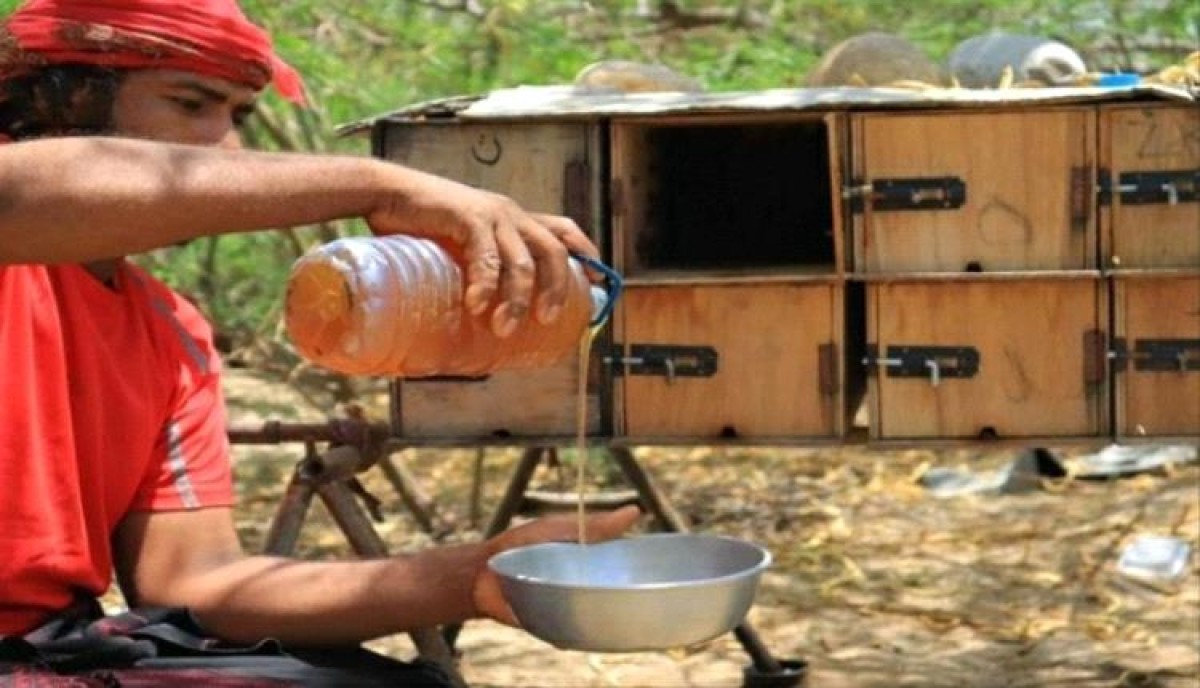Detecting a decline in Yemeni honey production


Yemeni honey faces many obstacles that prevent it from increasing its productivity, after it rose in recent years, especially the highest quality Sidr honey
The fluctuations in the weather and the high temperature following climate change, and the blocking of roads by the Houthi militias, have contributed to weakening the production of Yemeni honey, in addition to the phenomenon of excessive logging witnessed in large areas in Yemen, especially the cutting of the Sidr tree from its roots, which bees feed on. On the nectar of its fruits
About 100,000 Yemenis work in beekeeping and honey production, in light of the difficult economic and living conditions the country is witnessing
Decrease in honey production
Yemeni beekeeper Radwan Saleh (47 years old) says that his beehives are no longer producing as they were before, and that there is a decline, which he described as “significant,” in the quantities of honey he used to obtain, especially sidr honey. Radwan, who has been working in the field of beekeeping and producing Yemeni honey for more than 21 years, adds that bee pastures have become scarce, especially in the winter season, in addition to the effects on pastures during the summer of heavy rains, torrents, and floods.
He confirms that one of the problems he faces in his work as a beekeeper is cutting down the “samr”, “bark” and “sidr” trees from their trunks, whose pastures produce the finest types of Yemeni honey, as the unjust logging of these trees causes the desertification of large areas, and the lack of... Grazing places
As a result, during the last two years, Radwan resorted to taking his beehives located in the “Sharaab” area in the countryside of the Yemeni Taiz Governorate, to the Shabwa and Al-Mahra governorates in the south. In Shabwa Governorate, the Sidr tree is found in large areas in the governorate’s districts, and the nectar of its flowers produces Yemeni Sidr honey, which competes with international types of honey.
The Yemeni beekeeper continued in Shabwa Governorate for a month and a half, until the end of the honeycomb season, after which he headed with his beehives to Al-Mahra Governorate, traveling long distances and bearing high transportation costs
According to the beekeeper Radwan, the blocking of roads by the Houthi militias created additional burdens on the process of raising bees and transporting them in pastures between governorates, in addition to the fluctuations in Yemen’s climate
The Sidr honey season falls at the beginning of winter when the Sidr trees spread throughout the country bloom. Many areas are famous for Sidr, and beekeepers visit them during the season, the most prominent of which are Doan in Hadhramaut, Al-Osaimat and Wasab in Dhamar. According to the United Nations Development Programme, there are 1.2 million local beehives in Yemen, and these hives produce more than 1,500 tons of honey annually.
The production of natural honey in Yemen is a vital activity for restoring the economic development of the country, which was exhausted by the Houthi war nine years ago, and it is considered one of the best types of honey in the world, as confirmed by the UNDP. Yemeni honey is considered the best in the world, the most famous, and the most expensive, due to the distinctiveness of the Yemeni bee breed, one of the African bee breeds, and it is one of the smaller breeds of honey bees.
Hadhramaut Governorate ranks first in terms of the amount of honey production and in beekeeping as it is the ancestral profession, followed by Shabwa, Abyan, and Al-Hudaydah